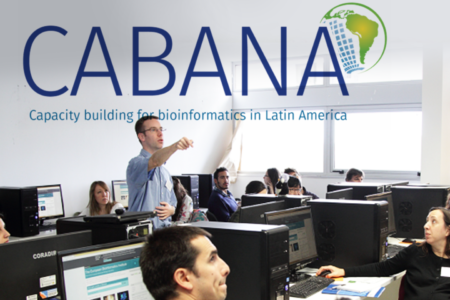
In addition to providing a valuable source of energy, orange-fleshed sweetpotato is rich in vitamin A. It is an ideal staple to grow in densely populated and drought-prone countries, like Ethiopia. This project aims to improve food security and nutrition among smallholders and the urban poor through a package of interventions that improve both supply of and demand for this valuable food source.
Background
Food insecurity and poverty, exacerbated by frequent drought, continue to blight Ethiopia. One of the most serious consequences is a high rate of malnutrition in children, which effectively impedes the country’s prospects for economic growth. The Southern Nations, Nationalities and People’s (SNNP) region is among those worst affected, with more than 38% of children suffering from stunting.
Vitamin A deficiency is a key contributor to child undernourishment; it limits growth, weakens immunity, affects eyesight and increases mortality. Food biofortification is an appropriate solution to improving health and nutrition in this region. While cereal-based diets predominate, sweetpotato is grown widely, and is an ideal food security crop. Sweetpotato is highly efficient in transforming water into calories, has a short maturity period, and can be harvested during the ‘hunger months’ before the cereals ripen. Orange-fleshed sweetpotato (OFSP) also provides a rich source of vitamin A, with a small plot of 500 m2 providing the daily dietary needs of a family of five.
This project builds on previous successes in improving vitamin A status in young children in Mozambique and Uganda through OSFP consumption. It aims to boost nutrition and food security among rural and urban families in SNNP region of Ethiopia.
Objectives
- Establish 53 decentralized OFSP vine multiplication sites operated by trained development agents and selected farmers; and provide 15,000 households with the inputs and knowledge needed to grow the crop.
- Raise awareness among at least 15,000 women and 10,000 men of the benefits of OFSP and how to cook it for best nutrition.
- Improve supply of and demand for OFSP in urban areas, prompting consumption by over 60,000 urban beneficiaries.
- After evaluating results over three years, recommend models for large-scale dissemination of OFSP within the region’s agricultural extension and health promotion systems.
Approach
Operating in densely populated districts 1,200–2,500 meters above sea level, the project support farming communities who mainly grow coffee, khat and false banana on their smallholdings, 0.4 ha on average. Food insecurity is moderate and dietary diversity low. The project takes an integrated agriculture, nutrition and market implementation approach using vitamin A-rich, early-maturing, OFSP as an entry point. It builds on experience highlighting the importance of educating communities—including men—on how to gain maximum nutrition from the crop, especially when feeding young children. Activities engage the public agriculture and health extension system, and support development and promotion of locally-adapted processed products.
The International Potato Center (CIP) has already developed training manuals—available in Ethiopia’s principle language Amharic—and ‘training of trainer’ course structures appropriate to the region. The project forms part of the ‘Sweetpotato for Profit and Health Initiative’, a multi-partner intervention that seeks to improve the lives of 10 million African households by 2020. This initiative has already helped to change the image of sweetpotato from being viewed as a subsistence crop produced by poor women to a healthy food choice and profitable enterprise for all. Existing links with local, national and international organizations will be further developed.
Gender-sensitive formative research on child nutrition and the sweetpotato value chain has been used to finetune training programs and vine dissemination strategies. Agronomic and communication research will produce practi-cal guidelines to support OFSP farming
and marketing, and evidence will be collected to justify the scaling out the approach to other areas. Equality of benefits for women and men will be ensured by conducting a detailed base-line assessment and using the results to improve the implementation strategy.
Expected outcomes
The key outcome is to improve improve diets and food security and promote agricultural diversification among 15,000 poor households with young children in SNNP region. The target households will receive OFSP planting materials and support maximize productivity. After the first harvest, they will be expected to share their vines with four of their neighbors. Setting up decentralized vine multiplication sites, established with individual farmers or small groups, will provide new business opportunities. Knowledge transfer will be ensured by training 160 health and agricultural extension agents, who will be given bicycles for improved mobility. Relevant regional staff will also benefit from knowledge-sharing activities.
Meaningful impact on the health and economic growth of the SNNP region will be accomplished only when OFSP is widely adopted by farmers and consumers. Widespread dissemination will be achieved by evaluating project successes and using the findings to develop models that promote cost-effective scaling up of activities. The main thrust will be to integrate dissemination tactics into the government health promotion and agricultural extension systems, with awareness and support activities also targeting academics,
plant breeders, the private sector, the regional health ministry and other policymakers, and other influential opinion-leaders.
Achievements
After two years, 24 farmer training centers have benefited from investments helping them to deliver planting material at the onset of the rainy season. In total, 48 demonstration and multiplication sites have been set up. By 2018, 16% of all disseminated planting material could be sourced locally. More than 4,000 households had received planting material, agricultural training and nutrition education from 190 trained extension agents. Supply to the market is still erratic. One restaurant has started using OFSP roots and leaves as ingredients. Preliminary results suggest that infant dietary diversity has improved significantly among beneficiaries and that there is significant demand by urban consumers for OFSP varieties with high dry matter content
Key outputs
| OUTPUTS | TARGET |
| Decentralized vine multiplication sites established | 53 |
| Households provided with inputs and knowledge | 15,000 |
| Women trained in nutrition | 15,000 |
| Men trained in nutrition | 10,000 |
| Urban consumers reached | 60,000 |
Contact
Anthony Brouwer
CIP, Ethiopia
r.brouwer@cgiar.org
Thanks to our donors



